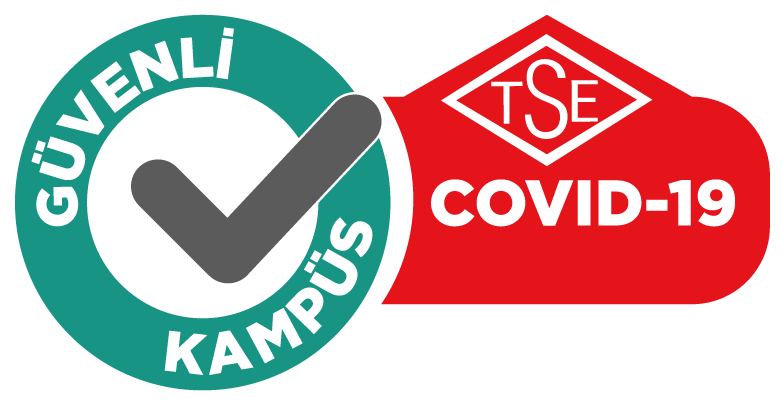ECTS - Legal Method
Legal Method (LAW109) Course Detail
| Course Name | Course Code | Season | Lecture Hours | Application Hours | Lab Hours | Credit | ECTS |
|---|---|---|---|---|---|---|---|
| Legal Method | LAW109 | Area Elective | 2 | 0 | 0 | 2 | 4 |
| Pre-requisite Course(s) |
|---|
| N/A |
| Course Language | Turkish |
|---|---|
| Course Type | Elective Courses |
| Course Level | Bachelor’s Degree (First Cycle) |
| Mode of Delivery | Face To Face |
| Learning and Teaching Strategies | Lecture, Discussion. |
| Course Lecturer(s) |
|
| Course Objectives | An introduction to the law in terms of solving legal problems and the meaning of the norm in legal system, teaching how to read and interpret the norm. |
| Course Learning Outcomes |
The students who succeeded in this course;
|
| Course Content | Argumentation and logic in law, the concept of law, hierarchy of legal norms, legal interpratation, main principles and methods in legal interpratation |
Weekly Subjects and Releated Preparation Studies
| Week | Subjects | Preparation |
|---|---|---|
| 1 | Introduction: The aim of this course meaning of the concept of method and methodology. | Ernest Hirsch, Pratik Hukukta Metod, Banka ve Ticaret Hukuku Araştırma Enstitüsü, 2003; |
| 2 | The method of research a topic and the method of writing an article/homework. | Ernest Hirsch, Pratik Hukukta Metod, Banka ve Ticaret Hukuku Araştırma Enstitüsü, 2003; |
| 3 | The meaning of “Legal problem” | Hirsch, p. 5-13. |
| 4 | To find the type of the case and the differences between public and private law. | Hirsch, p. 18-23. |
| 5 | Categorization and description of the legal problem, describing the legal relationship and the legal consequences of it. | Hirsch, p. 23-53. |
| 6 | The form of description of the problem in the Courts, proving the claim. | Hirsch, p. 53-83. |
| 7 | Midterm | |
| 8 | The legal norm: definition and differences from the other norms. | (This part of the course is prepared by different sources and notes of the instructor is used by the students) |
| 9 | The exterior and interior elements of legal norm | (This part of the course is prepared by different sources and notes of the instructor is used by the students) |
| 10 | The relationship among implication, logic and legal thinking, using inductive and deductive method in law | (This part of the course is prepared by different sources and notes of the instructor is used by the students) |
| 11 | The main logic problems faced in legal practice | (This part of the course is prepared by different sources and notes of the instructor is used by the students) |
| 12 | The analysis of a legal norm | (This part of the course is prepared by different sources and notes of the instructor is used by the students) |
| 13 | The types of interpretation of a norm | (This part of the course is prepared by different sources and notes of the instructor is used by the students) |
| 14 | Analogy and how to fill the gaps in a norm, the discretion of judge and the importance of discretion in legal order, usage of general principles of law in practice. | (This part of the course is prepared by different sources and notes of the instructor is used by the students) |
| 15 | An overview and general assessment | |
| 16 | Final Exam |
Sources
| Course Book | 1. Ernest Hirsch, Pratik Hukukta Metod, Banka ve Ticaret Hukuku Araştırma Enstitüsü, 2003; |
|---|---|
| 2. Yasemin Işıktaç, Hukuk Metodolojisi, | |
| 3. Selahattin keyman, Hukuka Giriş ve Metodoloji kitaplarının yanı sıra derste kullanılan örnek ve materyal öğretim elemanı tarafından öğrenciye ders notu şeklinde verilmektedir. |
Evaluation System
| Requirements | Number | Percentage of Grade |
|---|---|---|
| Attendance/Participation | - | - |
| Laboratory | - | - |
| Application | - | - |
| Field Work | - | - |
| Special Course Internship | - | - |
| Quizzes/Studio Critics | - | - |
| Homework Assignments | - | - |
| Presentation | - | - |
| Project | - | - |
| Report | - | - |
| Seminar | - | - |
| Midterms Exams/Midterms Jury | 1 | 40 |
| Final Exam/Final Jury | 1 | 60 |
| Toplam | 2 | 100 |
| Percentage of Semester Work | 40 |
|---|---|
| Percentage of Final Work | 60 |
| Total | 100 |
Course Category
| Core Courses | X |
|---|---|
| Major Area Courses | |
| Supportive Courses | |
| Media and Managment Skills Courses | |
| Transferable Skill Courses |
The Relation Between Course Learning Competencies and Program Qualifications
| # | Program Qualifications / Competencies | Level of Contribution | ||||
|---|---|---|---|---|---|---|
| 1 | 2 | 3 | 4 | 5 | ||
ECTS/Workload Table
| Activities | Number | Duration (Hours) | Total Workload |
|---|---|---|---|
| Course Hours (Including Exam Week: 16 x Total Hours) | 16 | 2 | 32 |
| Laboratory | |||
| Application | |||
| Special Course Internship | |||
| Field Work | |||
| Study Hours Out of Class | 9 | 4 | 36 |
| Presentation/Seminar Prepration | |||
| Project | |||
| Report | |||
| Homework Assignments | |||
| Quizzes/Studio Critics | |||
| Prepration of Midterm Exams/Midterm Jury | 2 | 11 | 22 |
| Prepration of Final Exams/Final Jury | 2 | 5 | 10 |
| Total Workload | 100 | ||

